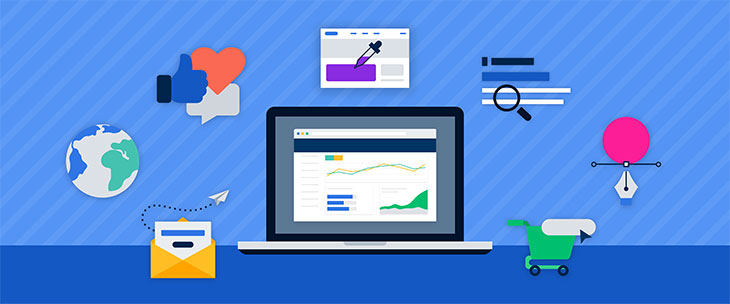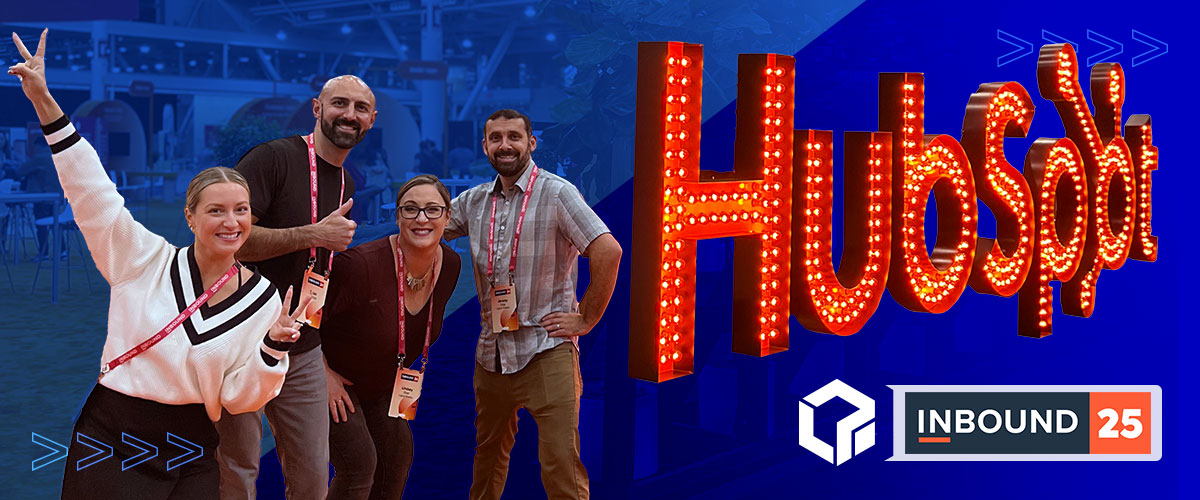When you’re running a business, growth is the name of the game. However, attaining that growth isn’t always so easy. That’s why marketers like myself are constantly searching for new ways to use all the tools in our toolbox to help businesses exceed their goals. Increasingly, we’re turning to omni-channel strategies to drive customers toward a purchase. While this might sound intimidating for a small business owner handling their own marketing, it’s really just a framework where you align all your marketing tools to perform specific jobs based on realistic expectations.
After all, you wouldn’t use a saw to drive in a screw. You also wouldn’t judge the effectiveness of a screwdriver based on its ability to cut a board. But too often, business owners invest in the wrong tool at the wrong time and then get discouraged when their return-on-investment (ROI) is so poor. By contrast, an omni-channel marketing strategy enables you to meet consumers at the right point in their purchasing journey and then judge your success or failure more accurately.
The Three Buckets of an Omni-Channel Marketing Strategy
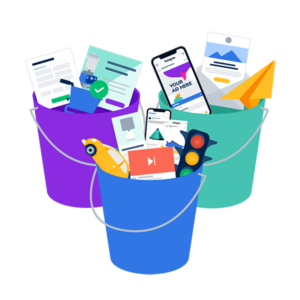
Marketers break down the customer journey in many different ways. The classic omni-channel model is AIDA, which divides consumer purchase behavior into awareness, interest, desire and action phases. More modern funnels include a final segment, like loyalty, which encourages repeat buying. I prefer to use a simplified version that splits marketing activities into three distinct buckets:
- Traffic: How can you effectively drive traffic to a website?
- Conversion: Once consumers arrive at a website, what tools can you use to secure a purchase?
- Post-Purchase: After a customer makes their purchase, what actions can you take to encourage future purchases?
Each of these buckets has a critical metric that influences ROI. For the traffic bucket, that metric is cost-per-click. The conversion bucket uses conversion rates and post-purchase tracks average order value (AOV).
In my experience, most businesses over-invest in the traffic bucket at the expense of the other two. While driving new traffic is undoubtedly important, it’s the least efficient way to spend your marketing dollars. That’s because investing in your conversion or post-purchase buckets means more revenue while investing in your traffic bucket just brings more people to your website. What’s more, shoring up your conversion and post-purchase activities makes your traffic bucket more efficient as a larger share of your visitors become buyers.
An effective omni-channel strategy will reach consumers in each of these three buckets using different methods and tools. Successful omni-channel marketing strategies also recognize the unique role each channel plays and then evaluate them on those merits. Let me show you what I mean as I dig a little deeper into each bucket.
The Traffic Bucket
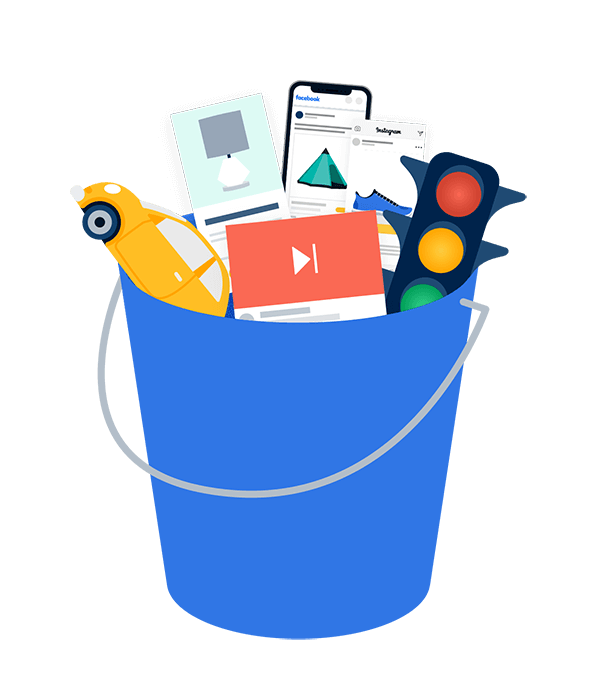
Marketing activity typically starts by casting a wide net for potential new customers. The goal is to generate interest among people unaware of your brand and then direct qualified audiences to your website.
The Marketing Activities
While you can generate traffic in many ways, these activities typically take two different forms: advertising that generates demand and advertising that captures existing demand. Social media marketing, affiliate marketing, programmatic display, video, and even TV or radio advertising all target consumers who aren’t in shopping mode. Ideally, these ads motivate consumers to explore your brand and products further. As a result, these activities should be aimed at interest and brand-building objectives.
On the other hand, using paid search tools through platforms like Google or Microsoft targets a more qualified group of consumers who’ve already shown interest in a product or service by entering specific keywords into a search engine. These consumers are probably researching something they’re considering buying, so you have the opportunity to present your brand as the best choice for them.
You can adjust your ad bids up and down on these platforms, impacting overall spending and ROI. However, if you reduce spending too much, traffic falls off, and the sales funnel will eventually dry up.
Other Considerations
Unlike the conversion or post-purchase buckets, your influence over the consumers in the traffic bucket is fleeting. That is, most people will bypass your ads without clicking. Of those that do click, even fewer will buy. Consequently, it pays to be cautious about ramping up traffic spending without first improving the other marketing buckets that have a greater impact on revenue.
New privacy protections are also impacting the traffic bucket. Apple’s iOS 14 update reduced Facebook’s ability to target specific audiences and track key metrics. While the full impact of this change is still unknown, keep in mind that advertisers have seen significantly reduced return-on-ad spend for this channel.
Measurement Methods
While cost-per-click (CPC) is a straightforward metric to test and measure search ad performance, brand awareness benefits are a bit more hidden. However, a boost in brand awareness should bleed over into other metrics. For instance, was there a lift in direct traffic or increased paid or organic Google traffic? If so, that could indicate more consumers have searched for your brand.
You can also test the effectiveness of your brand awareness activities within a well-defined testing environment. Start by testing your ads sequentially — Facebook one month, Pinterest the next, etc. — so you can clearly align sources and metrics. You can also try limiting your geographic area to a region, state or metro area. If you take these approaches within a defined timeframe, you can begin to judge a rough revenue impact.
The Conversion Bucket

Many people don’t pay enough attention to this bucket because they mistakenly believe their conversion rate “is what it is.” In reality, the conversion rate is the primary variable marketers can manipulate for better results. However, improving conversion rates requires you to understand and eliminate as many purchase barriers as possible.
As consumers respond to your search and social media advertising, they’ll arrive at your site with two crucial questions in mind. The first is whether or not your business offers what they want. The second is if your business is a trustworthy place to spend their hard-earned money. If the answer is yes to both questions, you have a much better chance of making a sale.
The Marketing Activities
The speed with which your site can answer questions and demonstrate credibility is critical. It requires that you put yourself in the shoes of potential customers. For example, how will new visitors search for what they’re looking for? Many businesses organize their websites based on how they view their products rather than what’s easiest for the shopper. In these instances, a user unfamiliar with your brand may become frustrated if they can’t easily find what they need. Instead, consider using search data to help you arrange your website to match how people actually talk about your products.
Moreover, when it comes to generating consumer trust, nothing works quite as well as social proof. When potential customers see real people buying and loving your products through social content or on-site reviews, it removes some doubt and strengthens the likelihood they will purchase something new to them.
Other Considerations
As you audit your site, consider every aspect of the user experience. For example, adding multiple product photos and product demonstration videos will give potential buyers more information to help them make a purchase decision. If you aren’t already, consider aggressive pursuit of social proof. One way to do that is to offer incentives (discounts, gifts with purchase, etc.) for user-generated product photos or to pay for a review aggregator that pulls in social proof from across the web.
Measurement Methods
The conversion rate is the primary metric to judge how well your site converts visitors into buyers. However, other measurements can reveal how users navigate your site. Google Analytics provides statistics for time spent on site and pages per purchase, offering insight into on-site behavior.
In my experience, there could be lots of small issues that impact purchasing. But, more often, sites have a single problem that limits conversion rates. By finding that problem and fixing it, you’ll see a dramatic improvement in your revenue. Start this process by making changes one by one, and then allow some time to see how that change impacts your key metrics.
The Post-Purchase Bucket
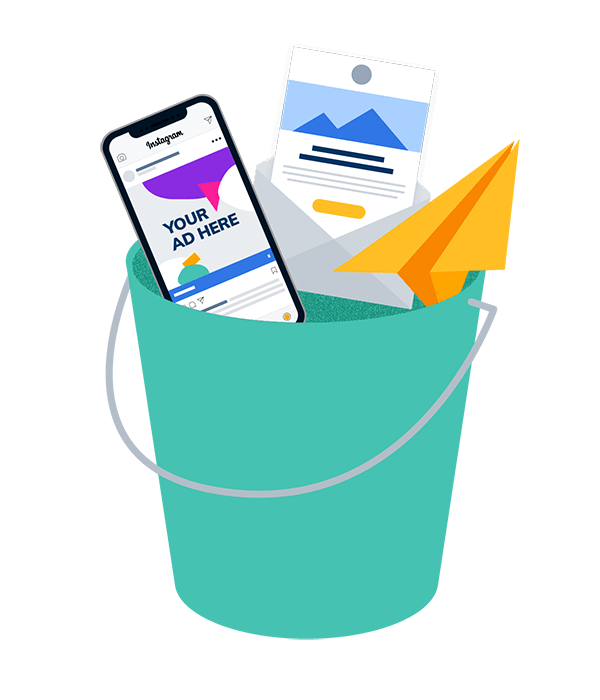
You’ve probably heard the marketing adage that it costs five times as much to attract a new customer than it does to retain an existing one. While we could certainly debate the precise numbers, the concept is solid. Bringing new traffic to your site does require an investment of both funds and time. That’s why once a consumer has made a purchase, it’s wise to use tactics to convince them to buy again. That’s where the post-purchase bucket comes in.
Post-purchase is all about building relationships with your best and most loyal customers. These buyers want to feel like they’re special, so you’ll give dedicated attention to outreach. If you’re successful, you begin increasing each customer’s lifetime value and subsequently, growing your business’ revenue.
The Marketing Activities
Email is a profitable marketing channel and critical as a post-purchase strategy. Even though this channel sometimes gets a bad rap, email has strong conversion rates and a massive ROI. Most email platforms allow you to segment audiences based on any number of behaviors, enabling you to speak very specifically to targeted groups of buyers.
What’s more, as you invest more into an email marketing strategy, it makes sense to also invest in your traffic bucket because the two work so well together. Using email lists to build Facebook lookalike audiences helps you find more qualified leads to begin the sales cycle all over again and drive more people into your post-purchase bucket. Even if you lose money on your first sale, subsequent orders — driven by email — will be very profitable.
Loyalty programs can be another highly effective strategy for boosting customer lifetime value. By rewarding repeat buyers in unique ways such as offering special access to new products, limited-edition merchandise or points towards future purchases, you’re enticing them to choose you over your competitors, which can be particularly valuable if you’re a reseller that’s marketing the same products as others.
Other Considerations
Most businesses run their loyalty programs using a third-party application, which can be a rich consumer data source. With the privacy trends we mentioned earlier, third-party data from sources like Google and Facebook are quickly diminishing. Thus, first-party data gained through purchase behavior is becoming more valuable than ever. In fact, future marketing success/product sales will likely rely heavily on how effectively you use first-party data to build better relationships with your customers.
Measurement Methods
The post-purchase bucket is the most straightforward to measure. Consumers typically make purchases directly from loyalty programs and email campaigns, so expect to see lots of direct revenue and high conversion rates. Email, in particular, also drives purchases that don’t always show up in direct revenue. That’s because people see the email, don’t make a purchase and then do a brand search on Google later the same day to ultimately buy. So, you’ll likely see an increase in brand search volume in your direct traffic as well.
It All Works Together
In the end, omni-channel marketing is less about using every available marketing tool and more about recognizing which tools to use and how they can work in tandem with your brand’s profitability goals. It is also critical to understand that optimizing any of the three buckets will make the others more efficient.
There’s no one right way to set up your buckets. Each instance might be different depending on the business, circumstances, goals, vertical and other unique considerations. However, when you focus on implementing improvements to each bucket individually, you’ll set the stage for increased revenue and sustainable business growth.
